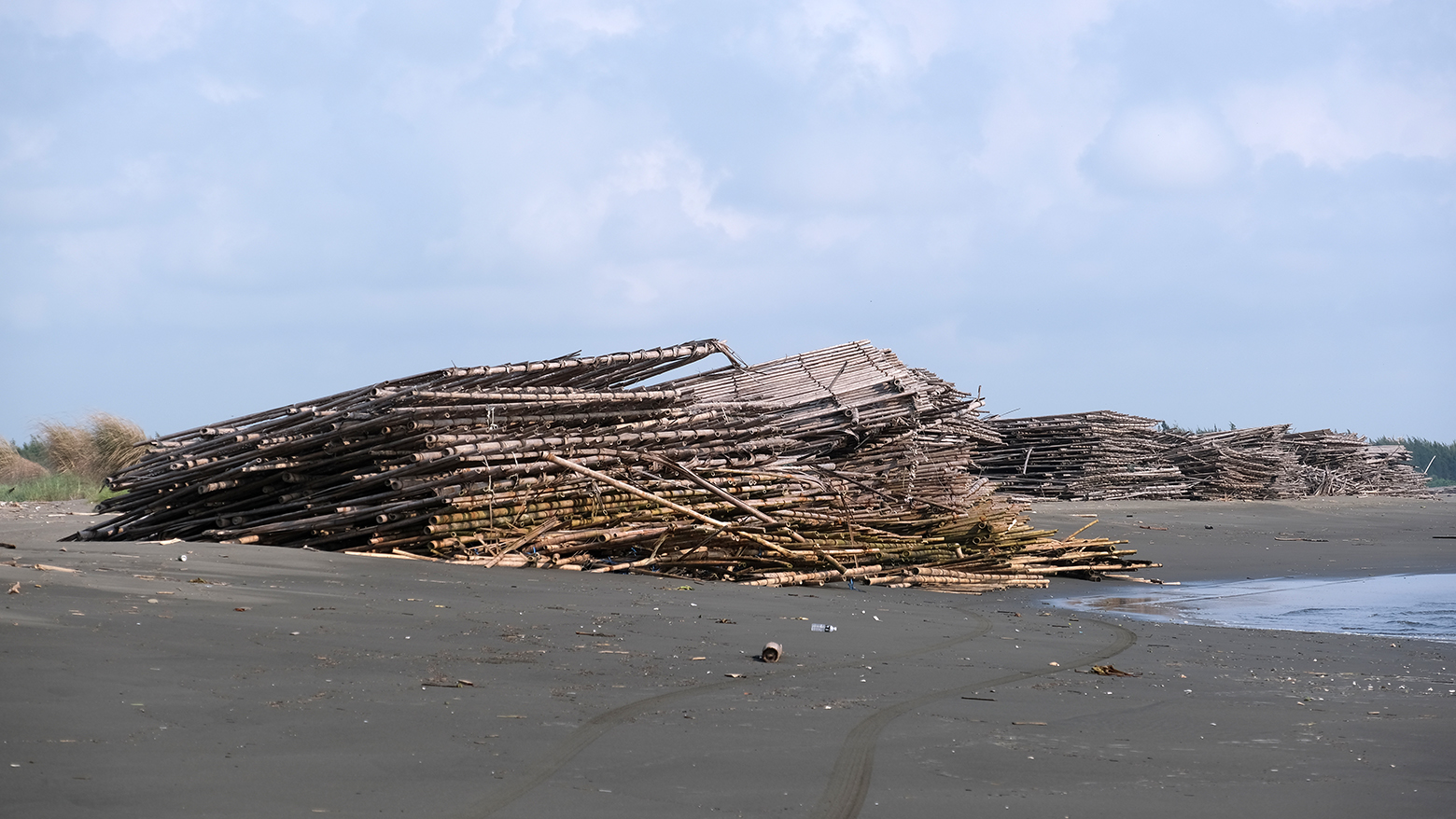
Oysters are the milk of the sea, with a flavor loved by food lovers around the world. But did you know that the oyster pens and polystyrene used by oyster farms are polluting our oceans?
The oyster farming industry in Tainan City is currently booming and is the third biggest producer of oysters in Taiwan, behind Yunlin County and Chiayi County. In the coastal areas of Annan District, Anping District, and South District, the coastal oyster farms that stretch from Tsengwen River to Erren River use floating pens. The farms cover an area of 1400 hectares and consist of more than 9000 oyster pens. The annual production is over NT$600 million, which is quite remarkable.
However, floating pens traditionally use large amounts of polystyrene to provide the buoyancy for the farm, which results in many oyster racks and large amounts of polystyrene being discarded after the oysters are harvested. The polystyrene debris is scattered on the beaches, making the Tainan coast look like a sea of white. The waste is not only hard to clean and an eye sore but also creates problems such as ocean pollution and accidental ingestion by animals.
Chao Jui-Kuang, a researcher in the Tainan Community University Environmental Team, has been tracking this issue for a long time, and discovered that the waste problem peaks between May and June every year. The used oyster racks are discarded on the beaches in piles up to three to four meters tall, and they stretch for several kilometers. Large amounts of polystyrene are also randomly discarded on the beach. Some recyclers even use the polystyrene illegally as comburent. They burn the bamboo racks in the night and collect the leftover wire the next day to resell the metal.
Furthermore, during the farming process, oyster farmers would scrape off the organisms growing on the polystyrene or pull the polystyrene out from under the oyster racks. This creates large amounts of polystyrene debris which causes serious pollution in the sea.
In response to this, the Tainan City Government has enacted the Self-Governing Ordinance on the Management of Shallow Water Oyster Farming to reduce the environmental burden caused by oyster farming through measures such as quantity restrictions, protective covers for polystyrene, and recycling incentives. However, in practice, the nets for polystyrene easily attract floating organisms and are easily torn by bamboo, so it does not completely solve the problem. In terms of recycling management, the city government offers a NT$30 incentive for every piece of polystyrene recycled. However, with the total amount of discarded polystyrene each year being around 40,000 pieces, only 8000 to 9000 pieces are recycled each year, showing significant room for improvement.
In terms of the use of alternative floatation devices, PE pontoons and EPP foam plastics, promoted by the city government, cost around three to four times the price of polystyrene. In order to increase the incentives for oyster farmers, the Agriculture Bureau listed a budget of NT$2 million to subsidize 225 pens, with the government covering two thirds of the cost and the farmer paying for the remaining one third. However, PE pontoons are not convenient for use in oyster farming and there are still risks of the EPP foam plastics cracking. Currently, the Tainan City Government has entrusted the Plastics Industry Development Center to conduct various physical and chemical tests on the improved floatation devices, in order to formulate standards related to the devices.
In fact, oysters are not only food. Chao Jui-Kuang pointed out that abandoned oyster pens can be used for ecological floating islands. Countries such as Japan, the United States, and China have been using oyster reefs to restore marine ecology. Furthermore, the oyster farming process is very environmentally friendly. Oysters are able to improve water quality and the bottoms of the pens are home to many different organisms, creating a rich and diverse ecology. The oyster pens are also able to reduce the effects of wave action. If oyster farming moves towards the long-term development of a fishing tourism industry, the combination of tourism, water and underwater activities should be able to create a triple win for the economy, environment, and tourism.
The episode interviews Chao Jui-Kuang, a researcher in the Tainan Community University Environmental Team, to explore ways to achieve economic benefits and environmentally friendly co-existence for oyster farming.
Podcast on demand



 中
中